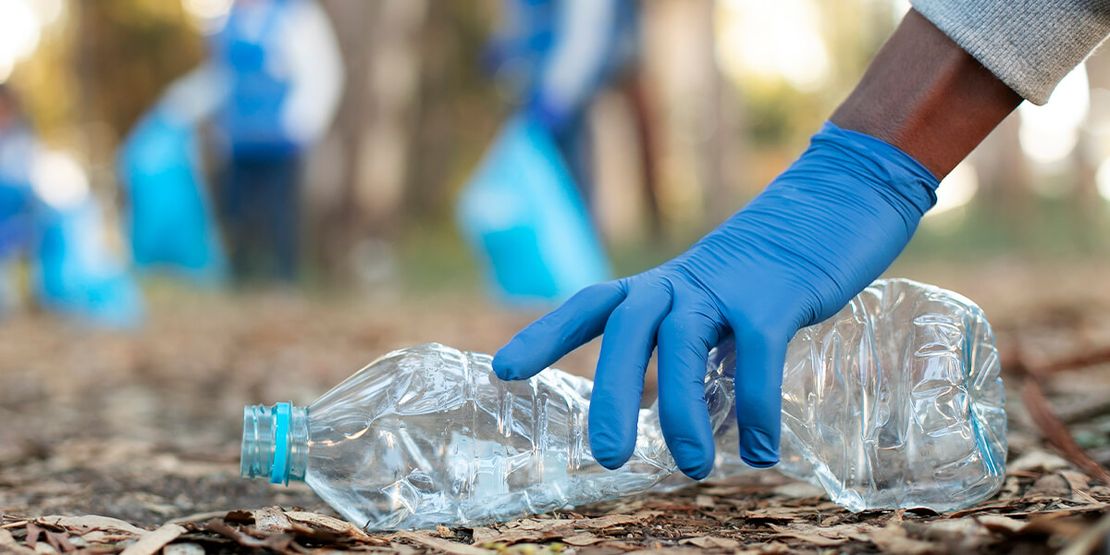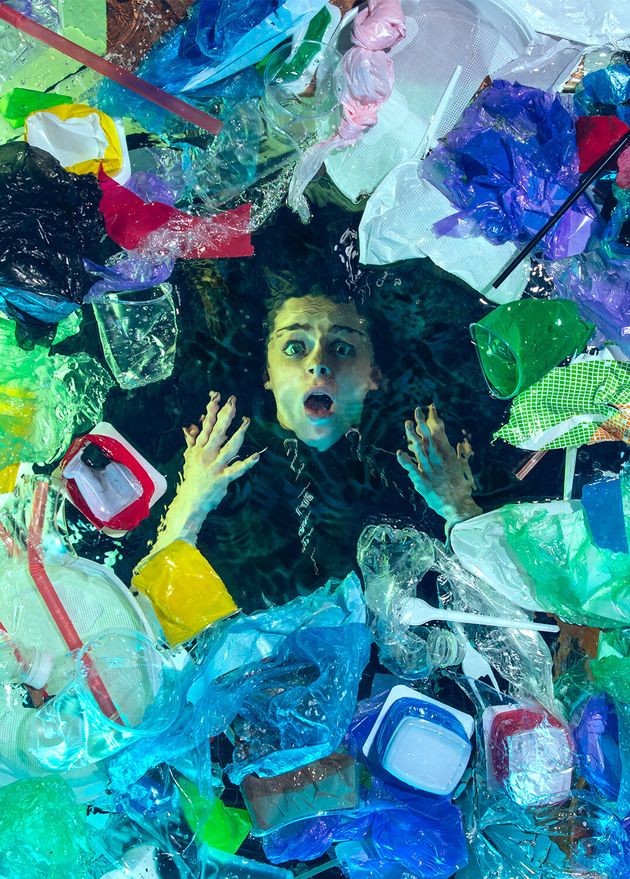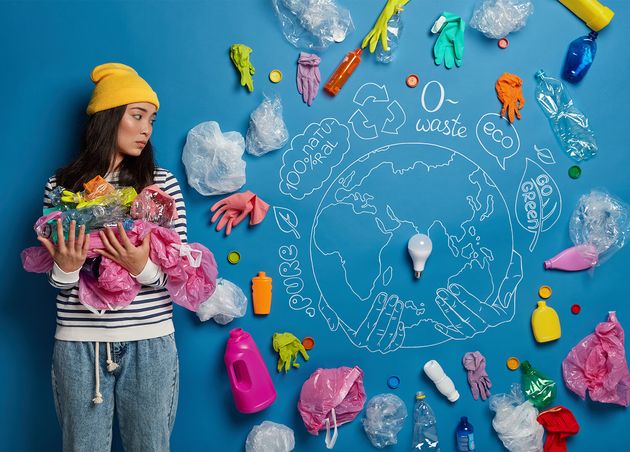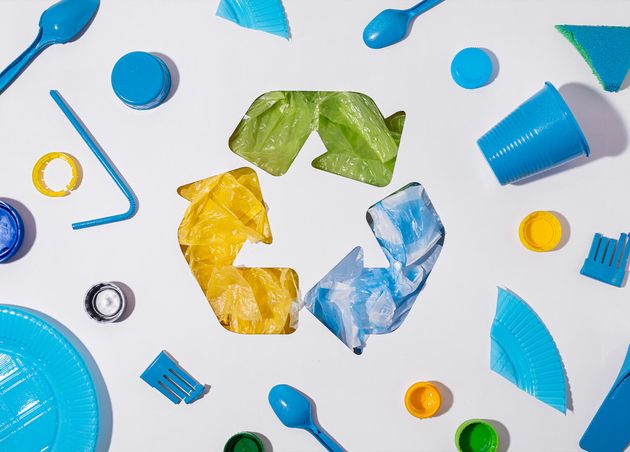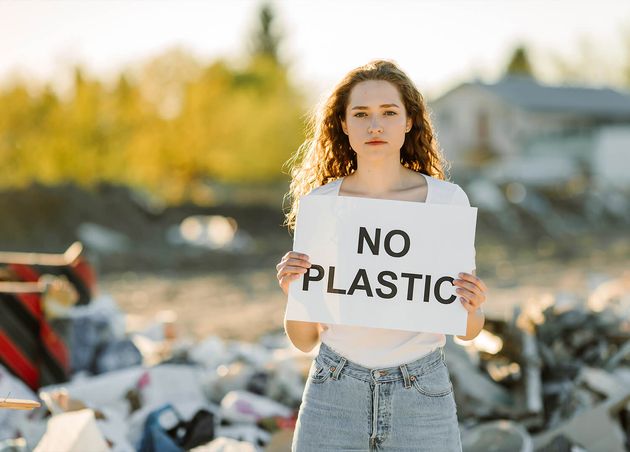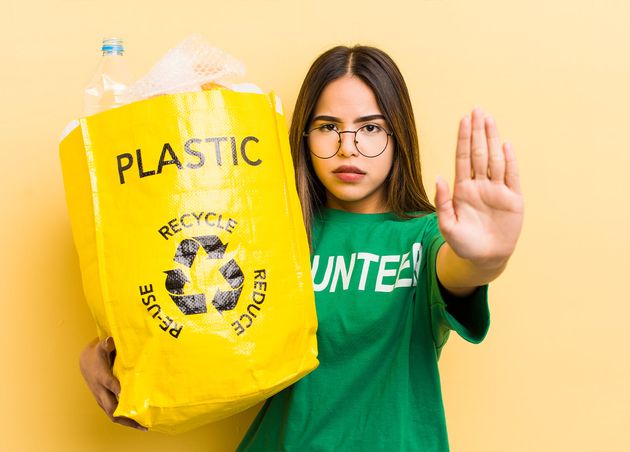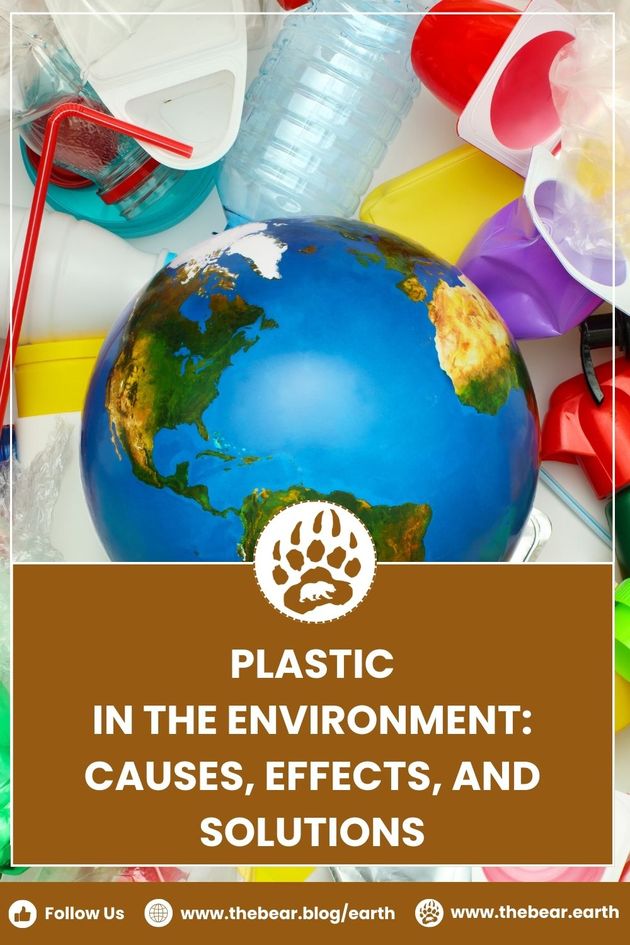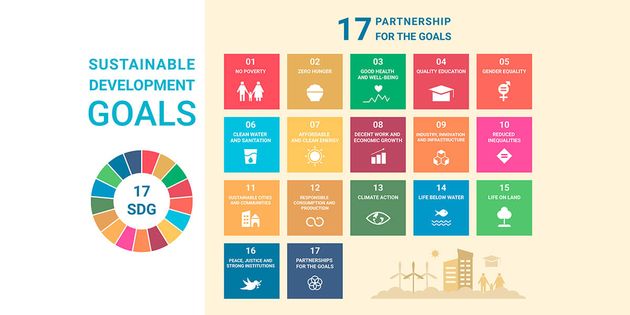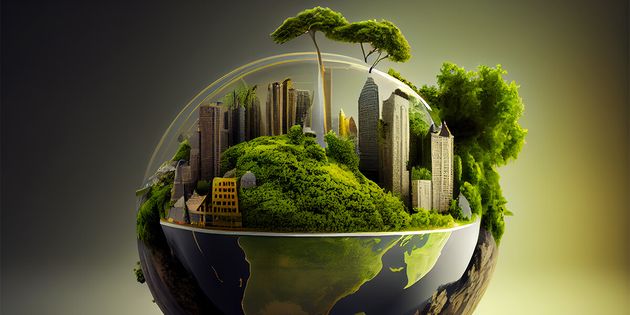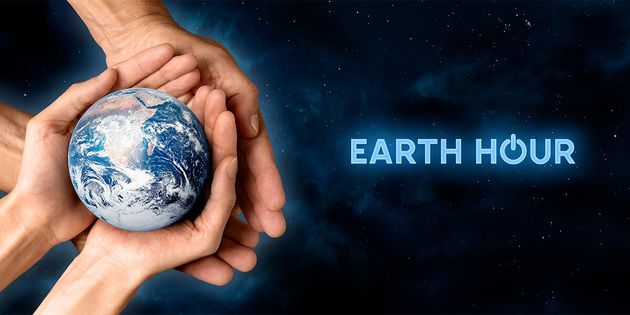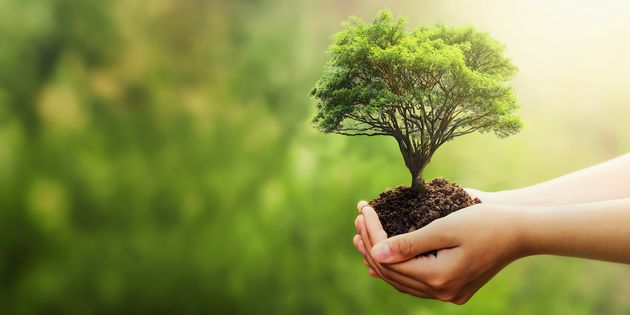Plastic in the Environment: Causes, Effects, and Solutions
Plastic, a substance characterized by its complex molecular structure and derived primarily from organic compounds, has become an integral part of modern life. Its formation involves linking carbon atoms into long-chain polymers, a process inadvertently discovered by the renowned German chemist Christian Schonbein in 1846.
Originating from a serendipitous kitchen mishap involving a mixture of sulfuric and nitric acids, the term "plastic" finds its roots in the Greek word "Plastikos," meaning "to mold." These polymers, crafted from the hydrogen and carbon-containing chemicals abundant in fossil fuels, have revolutionized countless industries and applications. However, their ubiquitous presence has also given rise to profound environmental challenges.
In this article, we explore the complex dimensions of plastic in our environment, from its humble beginnings to its far-reaching ecological impact. We will delve into its origins, assess its ecological footprint, and propose strategies to mitigate the adverse consequences it imposes on our planet.
🌏 Eco Fact!
Every year, 12 million tonnes of plastic are disposed of in the ocean.
An Overview of Plastic and the Environment
Given the world's current plastic crisis, the status quo is not an option. Plastic pollution is a severe worldwide problem that requires an immediate, multilateral response from all stakeholders at various levels.
Plastic pollution is a relatively recent phenomenon that is expanding rapidly. The amount of plastic produced annually worldwide has increased dramatically over the past decades, rising from around 1.5 million metric tons (MT) in 1950 to an astounding 390.7 million MT in 2021—a four percent annual growth. In the coming decades, plastic output is anticipated to rise even more because of ongoing expenditures in the petrochemical infrastructure.
By 2050, the world's primary plastic production could reach 1,100 million tons if things continue as they are. The continuous rise in plastic manufacturing is directly related to the industry's dependency on fossil fuels and significant expenditures in petrochemical facilities in strategic locations globally. Even though fossil fuel is used to make 99% of plastic products, both sectors are related.
A growing number of players from government, public society, and academia are advocating for initiatives to address the crisis by limiting plastic production in light of the extent and effects of plastic pollution. Within the current energy scenario, experts also suggest that cutting back on producing non-essential plastics can help reduce gas consumption without improving the climate or reducing pollution.
Lifecycle Impact of Plastics
Recycling and Waste Management of Plastics
Since the dawn of the 1950s, the world has actually produced more than 8 billion tonnes of plastic, a staggering quantity that has fueled the proliferation of plastic waste and exacerbated challenges in waste management. With the proliferation of single-use plastics exacerbating the issue, it has become increasingly urgent to address plastic waste management to safeguard public health and the environment. While reducing plastic production is crucial, effectively handling existing plastic waste is equally imperative.
Despite widespread advocacy for recycling as a solution, the reality is sobering: only 14% of plastic waste is collected for recycling worldwide. Critics highlight the limitations of existing recycling techniques, the need to address hazardous chemicals inherent in recycling processes, and the imperative to explore alternative solutions to the plastic crisis beyond recycling alone.
In global governance, the Basel Convention stands as a primary international instrument for regulating the transboundary movement and disposal of hazardous wastes. Headquartered in Geneva, the Convention has taken crucial steps to address the known issue of plastic waste. Notably, establishing the Plastic Waste Partnership and approving Plastic Waste Amendments in 2019 signify concerted efforts to enhance plastic waste management practices globally.
Agriplastics: Agriculture and Plastics in the Environment
Despite comprising a relatively small fraction, approximately 3.5%, of global plastic usage, agricultural plastics, often termed "agriplastics," wield a significant impact across multiple environmental domains. With an annual consumption of 12.5 million tonnes, these materials play a pervasive role in farming practices, encompassing many products such as mulch film, plastic-coated seeds, nets, packaging, synthetic fertilizers, and pesticide additives. Additionally, they become integrated into biosolid fertilizers applied to agricultural fields.
While certain agriplastic products have contributed to increased agricultural yields, mounting evidence suggests that their pervasive use results in soil pollution, posing threats to biodiversity, productivity, and soil health. Moreover, individuals engaged in farming or handling agriplastics at the end of their lifecycle are particularly vulnerable to different health risks associated with these materials. Studies underscore the detrimental effects of agriplastics on plant and animal health, further exacerbating concerns.
The repercussions extend beyond agricultural boundaries, as runoff and erosion from inadequately managed plastic pollution in farming practices can contaminate surrounding environments, perpetuating broader ecological impacts. As the intersection between agriculture and plastics becomes increasingly evident, addressing the challenges posed by agriplastics emerges as a pressing priority for environmental stewardship and sustainable agricultural practices.
A Green Economy Without Plastics
Plastics' significant adverse impacts on the environment and human health have spurred the creation of various programs, initiatives, governance solutions, and options aimed at addressing this pressing environmental concern.
The concept of a "circular economy" regarding plastics is widely recognized as the pivotal pathway to tackling the plastics challenge. However, the Center for International Environmental Law (CIEL) stresses the need for a redefinition of this notion, urging a comprehensive consideration of plastics' composition, usage, and disposal.
It's imperative to prioritize environmental human rights before delving into discussions about the circular economy. This entails separating harmful chemicals and toxic disposal methods from the circular economy discourse. To ensure that the recycle-reuse equation transcends being a mere substitute for virgin plastics, a fully circular model incorporating plastics must also encompass alternative materials and enforce production limits. Consequently, a safe circular economy must uphold human rights and contain toxins.
Effective Strategies for Plastic Usage
- Start Small
- Make one or two adjustments at a time and gradually increase it. We don't need a small group of individuals to execute zero waste flawlessly. Millions of people must work at it with imperfection.
- Carry a Reusable Bottle
- More than 35 million plastic bottles are used in the UK every day! Using a reusable bottle can help you reduce the amount of plastic you use and save money. Even an app indicates where you can get a free bottle refill!
- Don’t Use Plastic Straws
- Straws made of plastic are detrimental to water bodies. The next time you purchase a drink, consider whether you need a straw; if not, simply decline! You can also request that your neighborhood bar cease serving drinks with straws.
- Enjoy Your Victories
- Our varied circumstances and hectic lifestyles sometimes make it difficult to modify how we use plastic. You may occasionally forget your reusable cup or bottle but don't give up or be discouraged. Take pride in the work you are doing.
- Steer Clear of Excessive Food Packaging
- We can all strive to reduce the amount of plastic we purchase, whether it's by choosing a different supermarket or by going to a different store.
- Furthermore, loose fruits and vegetables are frequently less expensive than packaged ones.
- Make Use of Detergent Refill Stations
- For certain products, like laundry or dishwashing liquid, it can be challenging to avoid using plastic containers.
- Nevertheless, there are steadily increasing numbers of locations where you can refill your empty bottles.
- Avoid Single-Use Plastic Cutlery
- Everyone has experienced being taken off guard when purchasing a salad or yogurt at a cafe or train station and discovering that the only cutlery available is plastic.
- Even while it can be challenging to prepare for every scenario, you could want to keep cutlery on your desk at work or bring a spoon or fork in your bag.
- Order Milk Delivery
- Even if the sound of milk floating in the morning is not as common as it once was, there are still several locations where you can order milk in glass bottles, which are then collected and reused.
- Use a Shopping Bag
- Since a fee was implemented, the use of plastic bags in England has decreased by a staggering 85%.
- Many of us are accustomed to always having an additional bag, but if you still have trouble remembering, consider getting a foldable bag to fit inside your regular day bag.
🌏 Eco Trivia!
The percentage of plastic that is recycled is merely 14%.
Reducing Plastic Usage for a Sustainable Environment
In conclusion, while plastic has undoubtedly revolutionized various aspects of our lives, its widespread usage also presents significant environmental challenges. Improper disposal practices can transform plastic waste into a pervasive hazard, endangering ecosystems and wildlife, especially in our oceans.
Addressing this issue demands a concerted effort to enhance global plastic waste management, focusing on developing nations from which a significant portion of ocean plastic originates. Even small adjustments in our daily habits can substantially reduce plastic usage and contribute to a cleaner, healthier environment for future generations.
As we navigate the complexities of plastic usage, let us remain mindful of our environmental footprint and strive towards a more sustainable approach to consumption and waste management. By working together to mitigate the impacts of plastic pollution, we can pave the way for a brighter, greener future for all.
Eco Bear
More From The Bear Earth
The Bear Earth: Pioneering Sustainable Innovation for a Greener Future
The Bear Earth Team
Earth Hour: A Global Call to Action for a Sustainable Future
The Bear Earth Team


